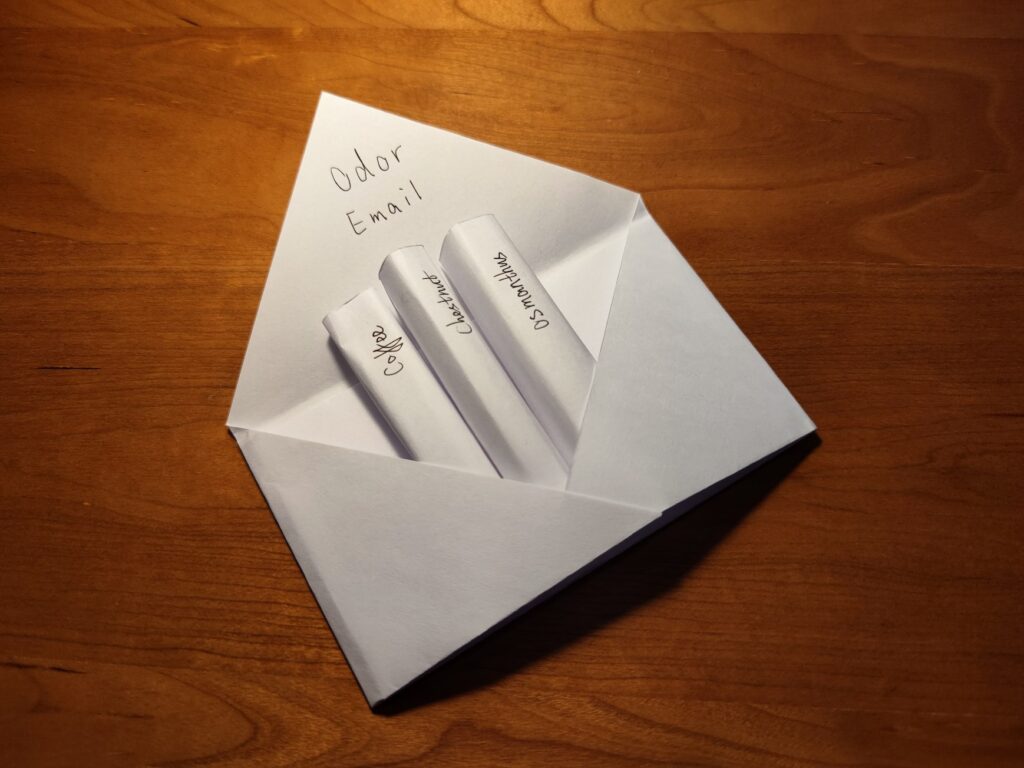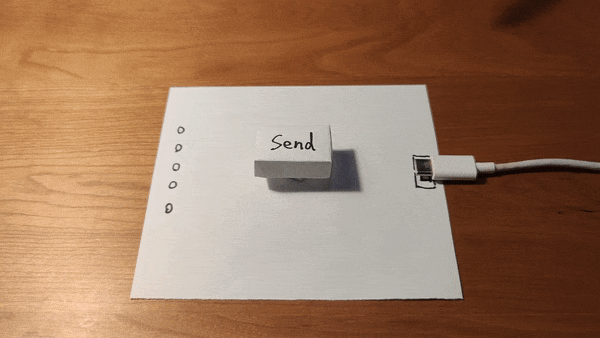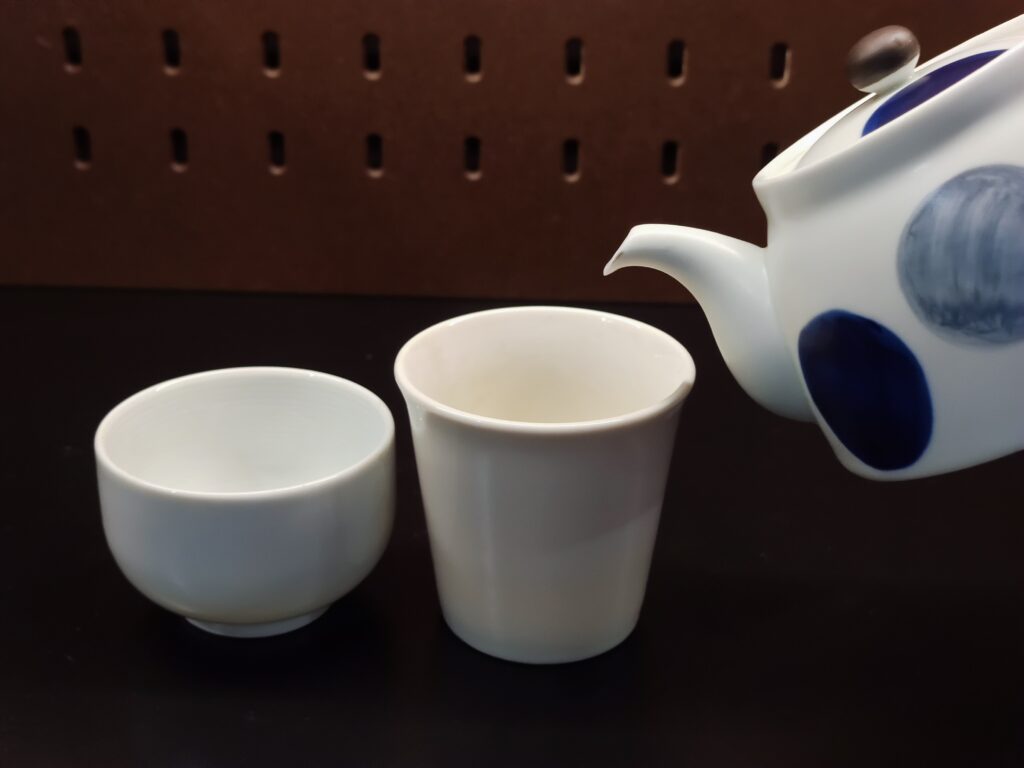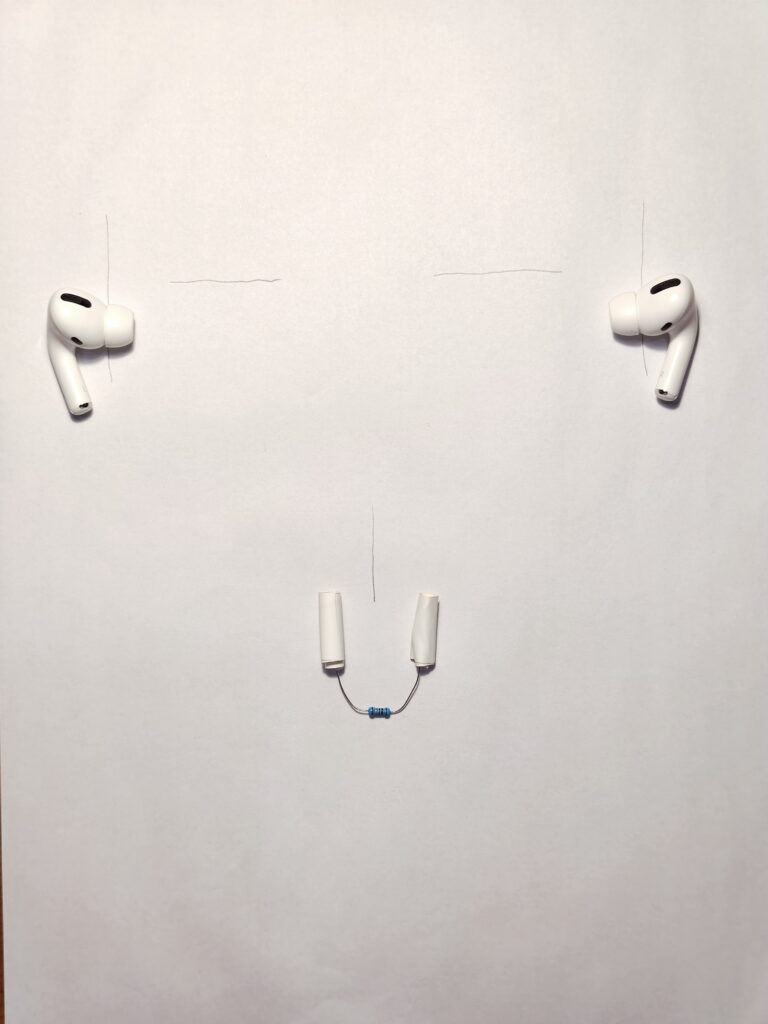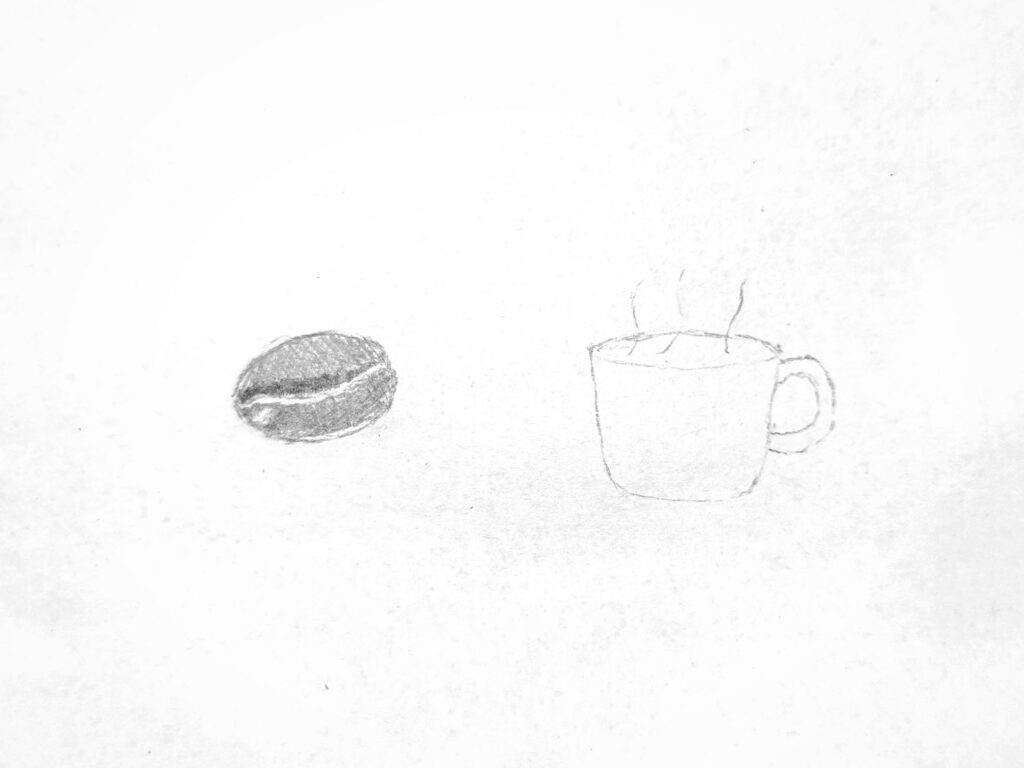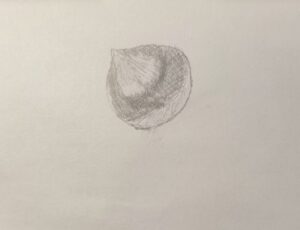Intention
Give people a sense of smell dysfunction (anosmia, parosmia) in order to make them empathic to these patients and raise more concerns about olfactory dysfunction.
Project
The project form is an olfactory testing machine placed on a table in the restaurant waiting area. Before customers have dinner, they may be curious and have a try.
The machine releases one odor per question to ask the user to distinguish. While the final odor is a mixed scent to give the user a feeling of parosmia.
See pictures on slides.
Presentation
https://docs.google.com/presentation/d/1QTVK3f1mKVR-lGbc4eWIAcR8Cx7RnNRSaf92d0hiOK0/edit?usp=sharing
Trail of Research
System Map
https://miro.com/app/board/uXjVPGOhG4A=/?moveToWidget=3458764539780840152&cot=14
Interview
Doctor Lu is using olfactory testing and MRI in his study. I interviewed him to get more understanding of odor and olfactory.
Olfactory dysfunction is related to neurodegenerative diseases. There are many ways to assess this kind of disease in general: Scale, PET/MRI, Structural MRI and olfactory testing. The scale is too subjective. PET/MRI has radiation. Structural MRI is too late to show the disease. In comparison, the olfactory testing is a better choice.
Specifically, the olfactory testing has these advantages: The machine is relatively small and portable. Which makes it suitable for mass screening. Besides, olfactory dysfunction is an early objective indicator of diseases. Because the olfactory cortex is connected to older, subconscious portions of the brain.
Talking about the relationship between olfactory and Covid-19, Dr. Lu was not surprised by the symptom. As he said, the virus might invade the brain and cause frontal lobe damage. Flu also has similar symptoms. However, he agreed that olfactory symptoms are easy to ignore. Since it is not as noticeable as visual or auditory. This is one of the reasons why he included olfaction in his study.
Daily Practice and Prototype
Daily practice
https://itp.nyu.edu/lowres/critex-monika/2022/10/20/daily-practice-day-2/
https://itp.nyu.edu/lowres/critex-monika/2022/10/21/daily-practice-day-3/
https://itp.nyu.edu/lowres/critex-monika/2022/10/22/daily-practice-day-4/
https://itp.nyu.edu/lowres/critex-monika/2022/10/24/daily-practice-day-4-3/
https://itp.nyu.edu/lowres/critex-monika/2022/10/25/daily-practice-day-6/
Prototypes
Form Decision
The most challenging part was deciding on the form. For the experience “smell distortion”, the basic form is releasing the odor which is not expected.
But it is so weird to release the wrong odor directly to the user. So I had been trying to think of a more natural form for days.
As the link shows: https://miro.com/app/board/uXjVPGOhG4A=/?moveToWidget=3458764539274013960&cot=14
I came up with 15 forms in the end. Some were fleeting thoughts. Some seemed rational, so I made prototypes to do user testing.
The form No.3, a simple “fruit matrix”. Same fruits a line with different scents. This is the simplest one of these forms. I thought it was clear too. But after the user testing, it was still confusing.
The form No.13, a box with a screen, a camera and odor vent. The idea was “mixing” the use’s expression with an orange scent. I did a user testing of this prototype. It seemed like they were too complex. An iteration was keeping only two expressions.
Then I did another user testing with my friend, who is a UX/UI designer. The testing itself was fair. After that, we had a chat. Because she’s a designer, she was interested in this class. I gave her some project examples. And she gave me an idea: If it was not clear to represent olfactory dysfunction, I could try to make the user feel that smelling is easy. Sounds like a contrasting. But the form was still hard to decide. We continued our chat on some other topics. Then, I got an inspiration suddenly. Why not make it just an olfactory test and put a turning point at the end? This makes it easy for users to go along the process and give the user the feeling of odor dysfunction.
The interesting thing is that it is the original form I took. Except the last question. It’s like a cycle and I return to the start point. However, I learned a lot during the process.
Others
There is an art form called “Olfactory Art”.
https://en.wikipedia.org/wiki/Olfactory_art
Bibliography
- Wang, Yuting, and Ziqing Li. “Living with Smell Dysfunction: A Multi-sensory VR Experience.” In ACM SIGGRAPH 2022 Immersive Pavilion, pp. 1-2. 2022.
- Moein, Shima T., Seyed MohammadReza Hashemian, Babak Mansourafshar, Ali Khorram‐Tousi, Payam Tabarsi, and Richard L. Doty. “Smell dysfunction: a biomarker for COVID‐19.” In International forum of allergy & rhinology, vol. 10, no. 8, pp. 944-950. 2020.
- Cattaneo, Camilla, Ella Pagliarini, Sara Paola Mambrini, Elena Tortorici, Roberto Mené, Camilla Torlasco, Elisa Perger, Gianfranco Parati, and Simona Bertoli. “Changes in smell and taste perception related to COVID-19 infection: a case–control study.” Scientific reports 12, no. 1 (2022): 1-11.
- Neumann, Franziska, Vitus Oberhauser, and Jürgen Kornmeier. “How odor cues help to optimize learning during sleep in a real life-setting.” Scientific reports 10, no. 1 (2020): 1-8.
- Parker, Jane K., Lisa Methven, Robert Pellegrino, Barry C. Smith, Simon Gane, and Christine E. Kelly. “Emerging pattern of post-COVID-19 parosmia and its effect on food perception.” Foods 11, no. 7 (2022): 967.
- Burges Watson, Duika L., Miglena Campbell, Claire Hopkins, Barry Smith, Chris Kelly, and Vincent Deary. “Altered smell and taste: Anosmia, parosmia and the impact of long Covid-19.” PLoS One 16, no. 9 (2021): e0256998.
- Smeets, Monique AM, Maria G. Veldhuizen, Sara Galle, Juul Gouweloos, Anne-Marie JA de Haan, Jesse Vernooij, Floris Visscher, and Jan HA Kroeze. “Sense of smell disorder and health-related quality of life.” Rehabilitation psychology 54, no. 4 (2009): 404.
- Hsieh, Julien W., Andreas Keller, Michele Wong, Rong-San Jiang, and Leslie B. Vosshall. “SMELL-S and SMELL-R: olfactory tests not influenced by odor-specific insensitivity or prior olfactory experience.” Proceedings of the National Academy of Sciences 114, no. 43 (2017): 11275-11284.
- Woods, Stephen C. “The eating paradox: how we tolerate food.” Psychological review 98, no. 4 (1991): 488.
- https://my.clevelandclinic.org/health/diseases/23986-parosmia
